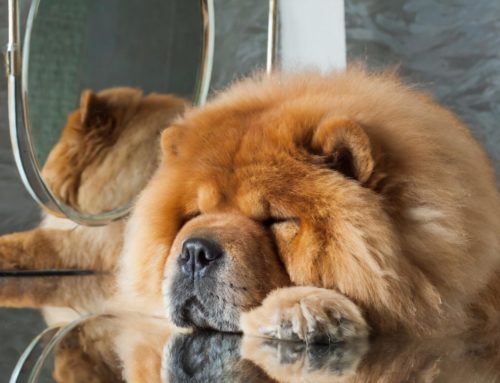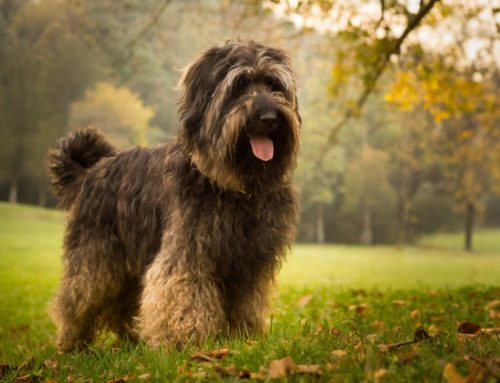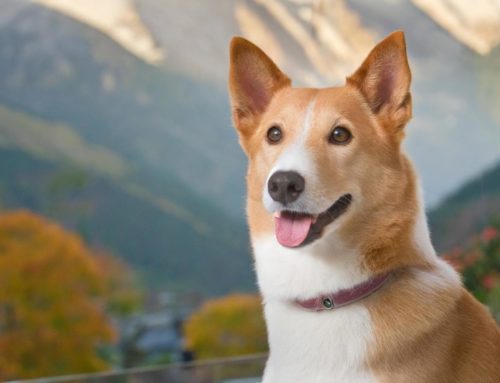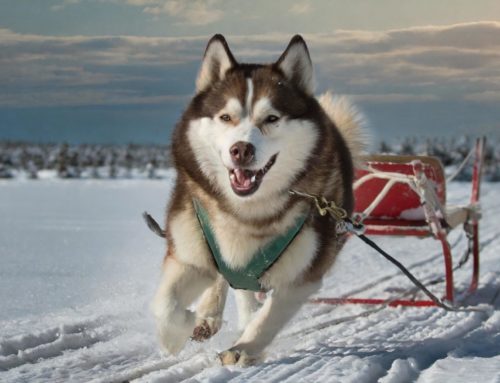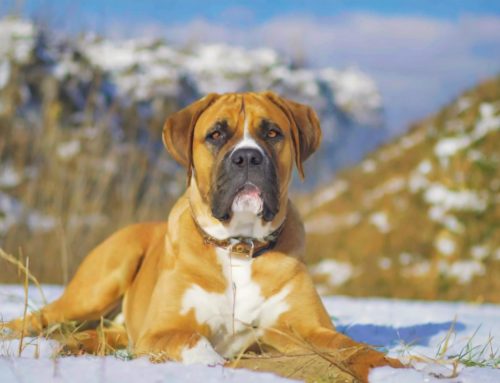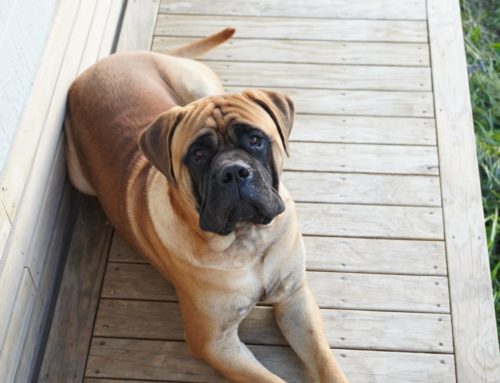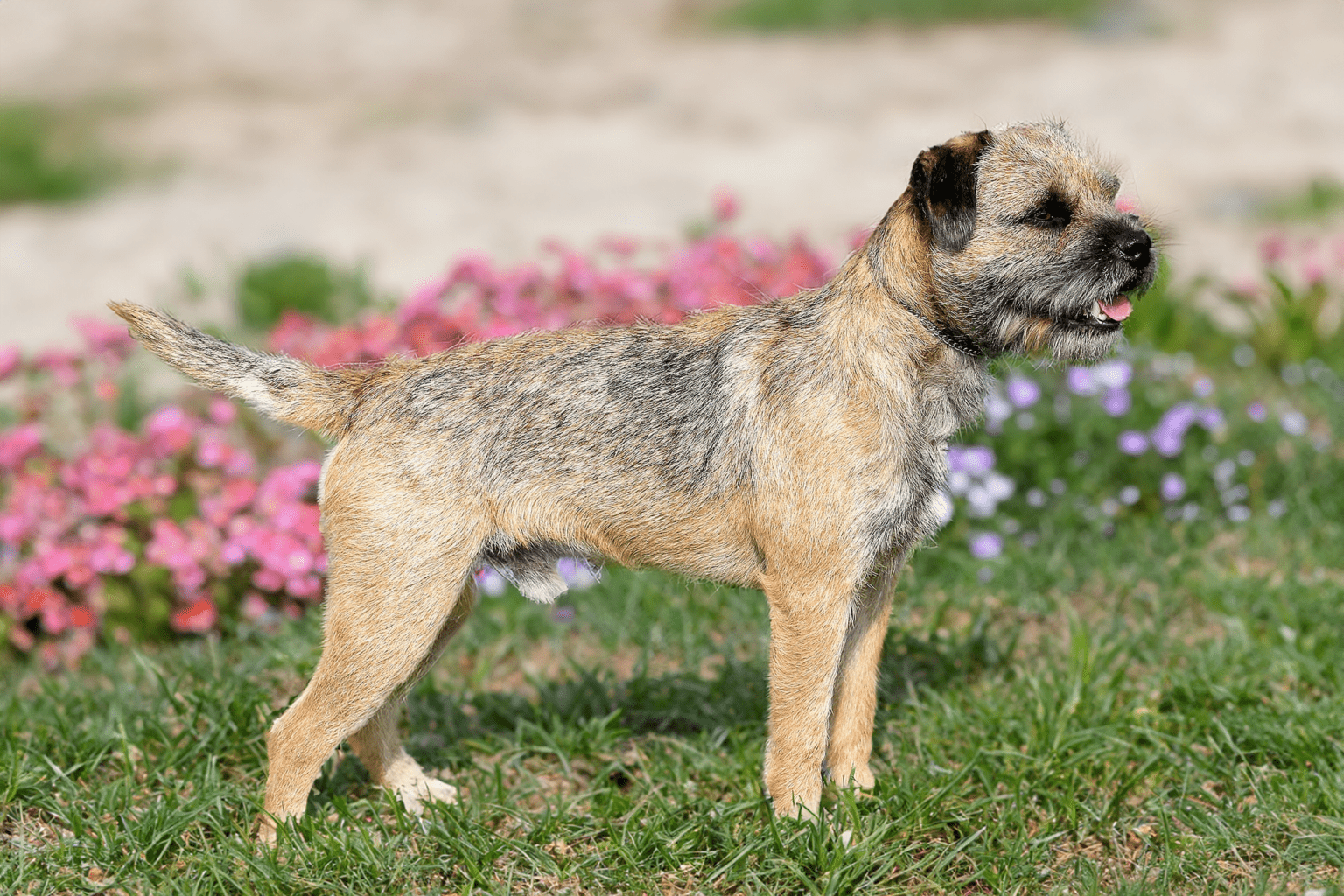
The Border Terrier, a breed that originated in the borderlands between England and Scotland, was originally bred for hunting foxes, badgers and other small game. These terriers had to have enough stamina to run alongside a horse and be small enough to fit into English fox dens.
Their coat, often in colors such as wheat-colored, grizzle with tan, and blue with tan, is double with a hard outer coat and a soft undercoat.
The Border Terrier is a member of the Dutch Border Terrier Club and is recognized by kennel clubs worldwide. He is known for his good upbringing and patience, which allows him to get along well with children and other small animals.
Despite its cute appearance and size, these dogs were meant to be working dogs and still have a well-developed hunting instinct and energy for dog sports.
FCI Group 3 Terriers
The Border Terrier, a small but courageous breed, is best known for its lively and friendly nature. This breed falls under the FCI Group 3, Terriers, and within this group it belongs specifically to the section of Small Terriers.
Originally bred for hunting foxes and exterminating vermin on the border between England and Scotland, the Border Terrier is known for its determination and endurance.
With its distinctive “otter head,” shaggy coat and compact build, the Border Terrier is designed to navigate the tightest of spaces while hunting. Despite its working dog past, the Border Terrier is a popular family dog today, valued for its adaptability and friendly temperament.
The appearance and coat of the Border Terrier
This terrier, one of the smallest of its kind, weighs about 7 kg and has a remarkably flat shape of the head that distinguishes it from most other terrier species. Its external features include small, wispy eyes and small ears that contribute to its intelligent and alert appearance.
The coat of a Border Terrier, requires regular grooming. Twice a year, the old coat should be hand plucked to maintain its quality. This breed was bred for hunting small game such as badgers and otters, and this is reflected in their sturdy build and long, graceful legs, making them excellent hunters and family dogs.
Breed standard of the Border Terrier emphasizes the need for proper upbringing and training, especially because of their hunting instinct. These dogs are great for sports people and adapt easily to different environments.
Hereditary diseases and disorders
The Border Terrier, is generally healthy, but as with many breeds, hereditary diseases and disorders can occur.
Below is a list of some of the most common hereditary diseases and disorders in the Border Terrier:
- Canine Epileptoid Cramping Syndrome (CECS): A neurological disorder that manifests as muscle cramps and abnormal behavior.
- Patella Luxation: A condition in which the kneecap shifts out of its normal position.
- Heart disease: Different types of heart problems can occur.
- Skin disorders: Such as allergies and skin irritations.
- Hypothyroidism: A deficiency of thyroid hormones.
- Cataract: Clouding of the lens of the eye that can lead to impaired vision or blindness.
- Hip dysplasia: A developmental disorder of the hip joint.
- Ear infections: Due to the shape and hairiness of the ears, Border Terriers can be prone to ear infections.
The character of the Border Terrier
Originally bred for hunting in the border between England and Scotland, this dog has excellent hunting characteristics in mind, such as a keen hunting instinct and great stamina. These dogs are known for glistening eyes with insightful looks and a character that quickly locks into the hearts of their owners.
As a family dog, they are well suited, especially because of their ability to get along well with children. However, they are active and need plenty of exercise. It is essential to provide proper upbringing and socialization from the beginning. Although they were used for hunting, these dogs are often affectionate and can form strong bonds with their families.
A Border Terrier that is not given the proper upbringing can develop behavioral problems, so it is important to read up well on border terrier upbringing and care.
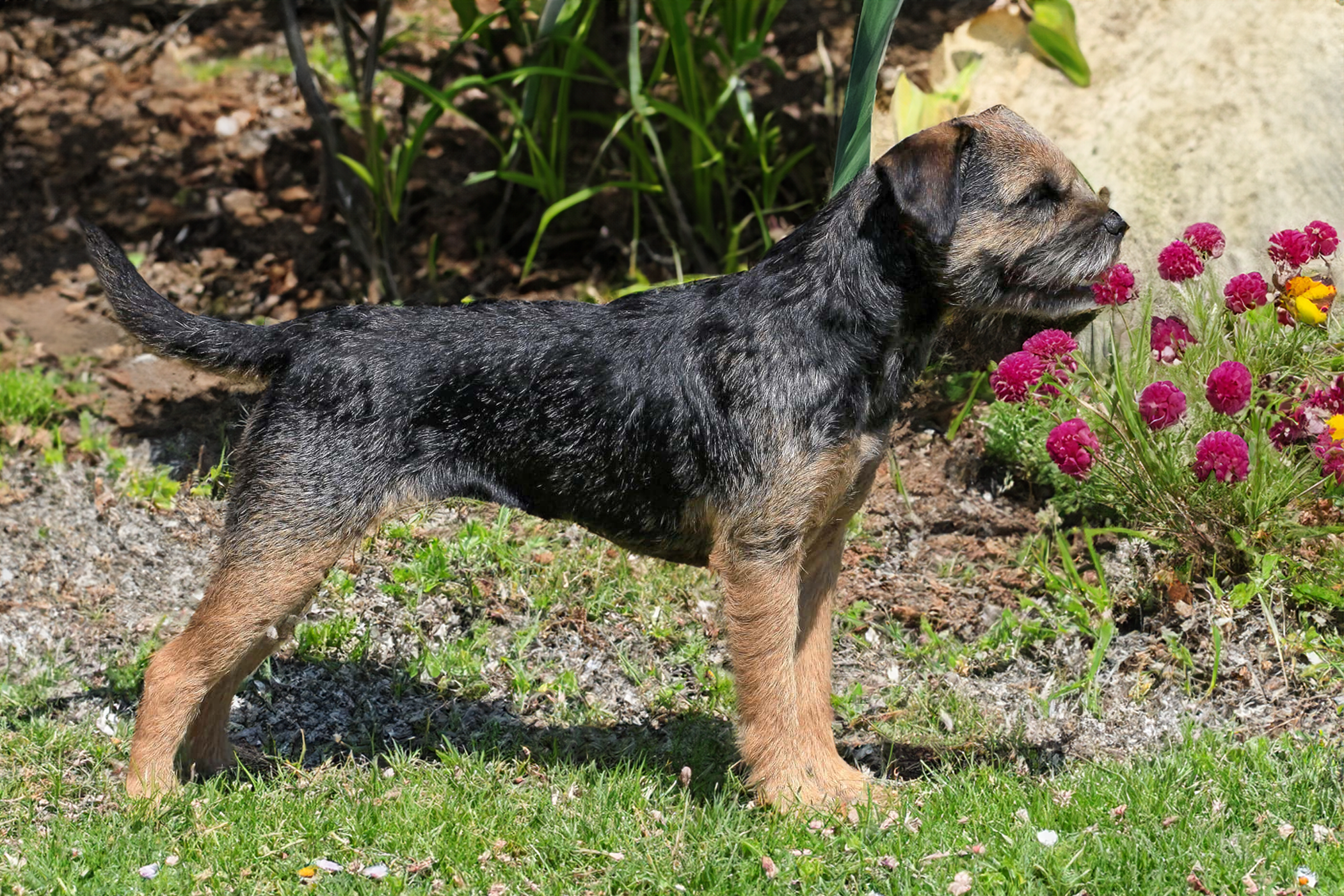
The care of the Border Terrier
The care of the Border Terrier requires specific attention given its unique characteristics. These dogs, recognizable by their ears and a remarkably flat shape of the head, long and graceful legs, are robust and cope well with all weather conditions, which makes them suitable for both urban and rural life.
Their coat requires regular maintenance; it is recommended that they be hand-trimmed annually to gently pluck out the old hair. This helps maintain the natural, rough texture of their coat.
An adult Border Terrier should ideally be fed two meals a day, with a nutritional balance appropriate to their active lifestyle, with a protein content around 20%. Originally used for hunting, these terriers have a strong hunting instinct and therefore require adequate mental and physical stimulation.
Because of their intelligent and curious nature, which quickly finds a place in their owners’ hearts, it is important to socialize and raise them properly from the beginning. Lack of adequate parenting can lead to undesirable behavior, especially when interacting with children and other pets. Their upbringing requires patience and consistency.
How much experience does a Border Terrier require
Found in several countries, these dogs are often part of targeted breeding where quality takes precedence over appearance. Because of their history as hunting dogs, with a strong tendency to scout and hunt, it is essential that the owner be well-versed in parenting and understand the breed’s unique characteristics.
For inexperienced owners, the Border Terrier can be challenging, especially because of its intelligence and ability to quickly get into the heart.
These dogs require a consistent upbringing from the beginning and may develop undesirable behaviors if not. They must understand who the leader of the pack is, otherwise they may try to assume this role themselves.
Is training necessary?
Training is crucial for the Border Terrier, a breed with a striking appearance and strong personality. These dogs are known for their relatively small height at the withers, but their energy and eagerness to learn are great.
Because of their history as working and hunting dogs, Border Terriers are naturally curious and love to explore no matter what the weather conditions. Compared to other breeds, Border Terriers have less risk of certain hereditary diseases, but a lack of proper upbringing can lead to behavioral problems.
It is essential to start training from the very beginning so that the dog develops the necessary discipline and social skills. This breed requires an owner who is well-versed in its specific parenting needs and methods. Border Terriers are smart and can learn new commands quickly, but their stubborn nature requires a consistent and patient approach.
It is important to keep their energetic and adventurous traits in mind during training. Dogs that are not properly trained may exhibit undesirable behaviors, such as excessive barking or digging. Training is important not only for obedience, but also for the dog’s mental well-being.
How much exercise does a Border Terrier need
The Border Terrier, an active and energetic breed, requires a significant amount of exercise to stay happy both physically and mentally. At least an hour of exercise daily, divided into two or more walks, is ideal for these dogs. This can range from long walks to play sessions in the yard.
Their history as working and hunting dogs means Border Terriers have an innate urge to explore and hunt, so exercise is important to them not only physically but also mentally. Activities such as hiking, running, and fetching are excellent for getting rid of their energy.
These dogs are also known for their agility and intelligence, so activities that stimulate both their bodies and minds, such as agility training or puzzle games, are highly beneficial.
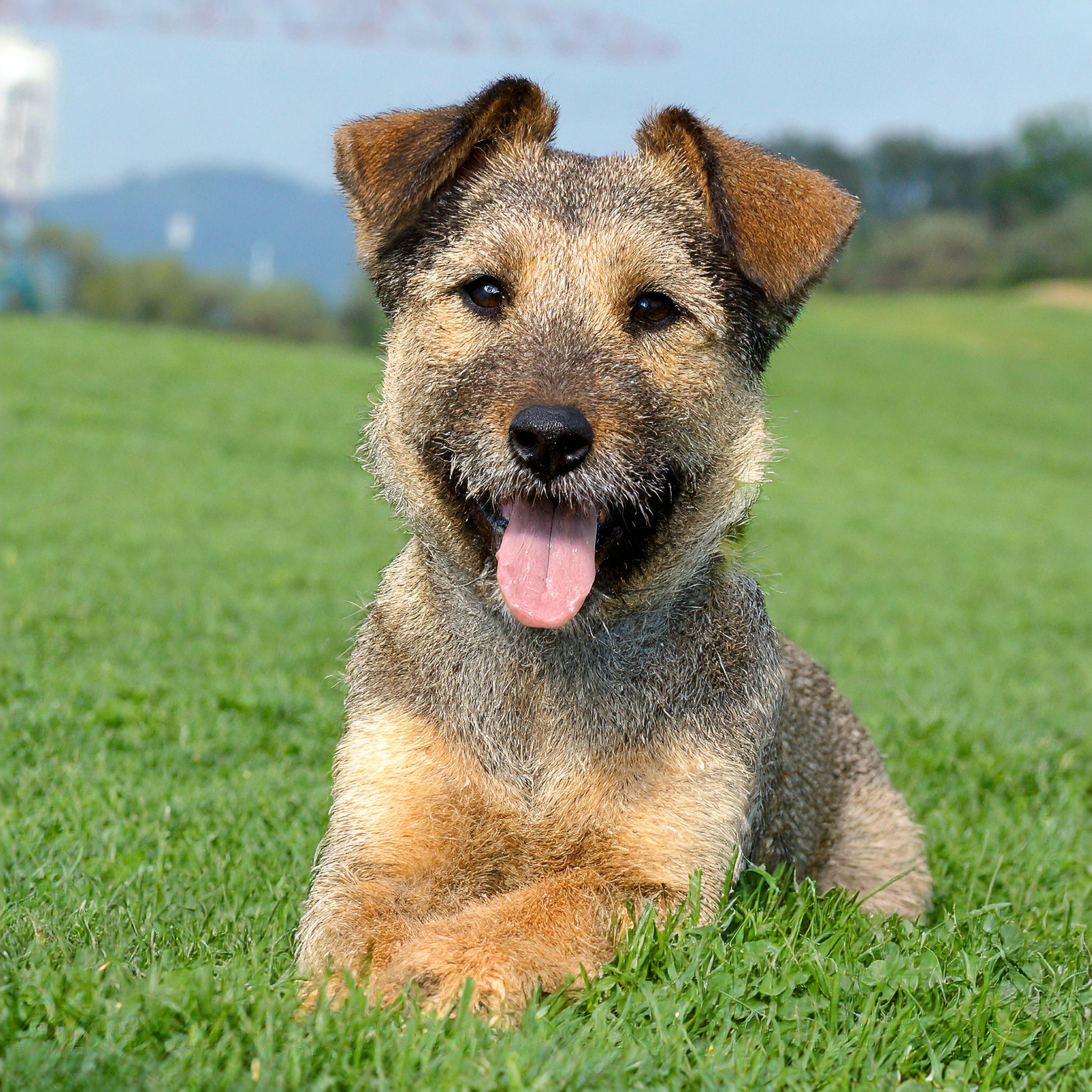
These breeds and dealing with children
The Border Terrier, known for its friendly and playful nature, is generally good with children. These dogs are patient and resilient, making them ideal playmates for children. Their compact size and sturdy build keep them from being too delicate to play with, yet small enough not to be intimidating.
However, it is important to remember that, as with all dogs, interaction between dogs and children must always be supervised. This is to ensure both the safety of the children and the dog. Border Terriers are naturally curious and can sometimes be a bit stubborn, so early socialization and consistent training are essential to foster good manners.
Children should also be taught how to interact safely and respectfully with dogs. This includes understanding the dog’s body language, respecting their space and avoiding rough play. Border Terriers cope well with the hustle and activity of family life, provided their needs and boundaries are considered.
Benefits of a Border Terrier
- Size: Their small size makes them ideal for both apartments and homes with yards.
- Temperament: Border Terriers are known for their friendly and playful nature, making them excellent family pets.
- Intelligence: They are intelligent and eager to learn, which makes training relatively easy.
- Health: In general, they are a healthy breed with a relatively long life span.
- Coat Care: Their coat does not require much maintenance, only regular brushing.
Disadvantages of a Border Terrier
- Hunting instinct: Their strong hunting instinct can be a challenge, especially around small animals and pets.
- Mischief: Without adequate mental and physical stimulation, they can become mischievous or destructive.
- Stubbornness: They can be stubborn at times, requiring consistent training.
- Susceptibility to health problems: Although generally healthy, they are prone to certain hereditary conditions such as Canine Epileptoid Cramping Syndrome.
- Energy: They need lots of exercise and stimulation because of their high energy levels.
Life expectancy
The Border Terrier, has a relatively long life expectancy, which is one of its attractive characteristics. These small, energetic dogs live on average between 12 and 15 years, although some live even older.
Price of a Border Terrier
You might spend between $1,500 and $2,500 for a Border Terrier puppy from a well-regarded breeder.
Price Influencing Factors:
- Breeder’s Reputation: Expect higher prices for puppies from renowned breeders known for their champion lineage or proven competence in dog sports.
- Pedigree: Registered Border Terriers with the American Kennel Club (AKC) tend to cost more than those without official papers.
- Geographic Location: Prices can escalate in regions with elevated living expenses.
- Puppy vs. Adult: Generally, puppies are pricier than their adult counterparts.
Breeds Similar to Border Terrier:
For enthusiasts of the Border Terrier’s lively demeanor, consider these comparable breeds found within the U.S.:
- Jack Russell Terrier: Known for their boundless energy and sharp minds, with a price range of $800 to $2,000. They share the Border Terrier’s strong instinct for hunting and need for stimulating activities.
- Rat Terrier: Friendly and agile companions priced between $800 and $1,500. They also thrive on plenty of physical and mental engagement.
- Smooth Fox Terrier: These terriers are known for their spirited and self-reliant nature, typically costing between $800 and $2,000. Similar to Border Terriers, they can be strong-willed and benefit from experienced handling.
Additional Considerations:
- Understand the Breed: Border Terriers are intelligent and vivacious. They require a dynamic environment filled with play, education, and interaction.
- Visit the Breeder: Evaluate the puppy’s living conditions and meet the parents to check on health and behavior.
- Focus on Early Development: These terriers excel with early, positive reinforcement training and extensive socialization.
- Daily Activity: Regular exercise and engaging activities are essential for their well-being. They show a particular aptitude for dog sports and agility tasks.
Locating a Border Terrier Breeder:
- American Border Terrier Club: This organization offers a referral service and resources to assist in finding reputable breeders.
- Online Directories: Use kennel directories to locate and communicate with Border Terrier breeders near you.
Embrace Responsible Ownership:
Owning a pet is a serious, lifelong commitment. Consider adopting, as shelters often house Border Terriers or similar breeds, offering a more cost-effective and rewarding alternative to buying from a breeder.
